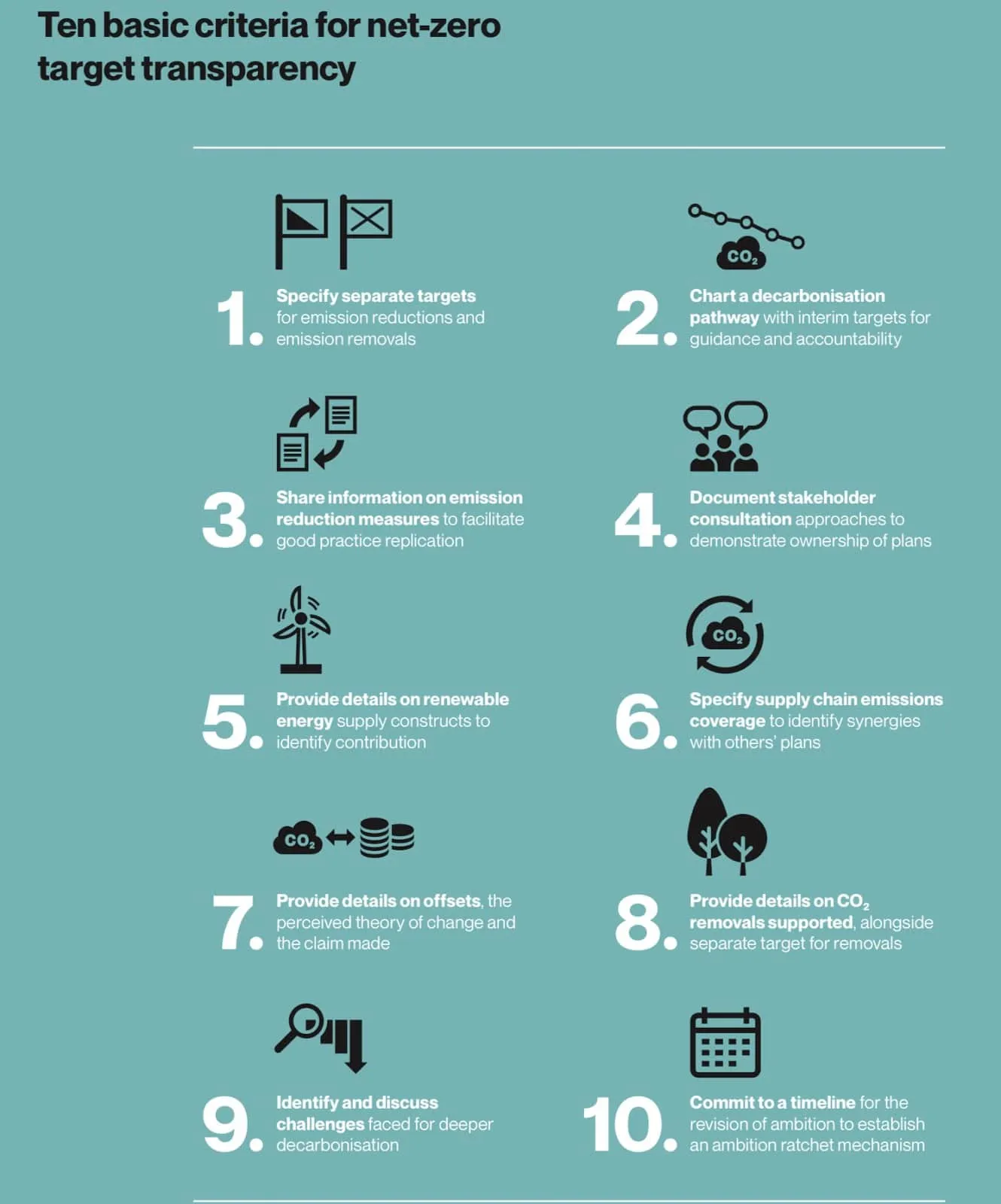Net-Zero Emissions by 2050: Are We Ready?



With the regular news about fires, droughts, tropical storms and other extreme weather events, I've been thinking more lately about what I'm sure many people support their hope: Reaching “net zero” emissions by 2050. It doesn't just apply to governments; companies, organizations and everyone, really, those who are serious about the climate crisis have established or are in the process of establishing net-zero objectives.
This is good news! It seems that everyone wants to reach zero emissions by 2050. But, Are we really ready to commit to the changes needed to make it happen? And do we have the tools to make change happen quickly?
The World Resources Institute has a system on the Climate Watch website where they show a map of each country's commitments to date, using its Net-Zero Tracker tool. You can check the status of Mexico hither. While it's important to be able to see the world's commitments, we need to go further.
It is necessary to be able to chart progress using equal indicators and comparing the strategic plans of each actor; we need to ensure that we are aligned with true science And that we are not falling into the Greenwashing or tell us that we are making progress, in order to avoid falling short of significant changes in the reduction of emissions.
What are some of the challenges affecting net-zero objectives? El New Climate Institute published a report entitled “Navigating the nuances of net-zero targets”, or “Navigating the nuances of net-zero objectives” in October last year. Some of its main findings are as follows:
1) The nuances in the implementation approaches of the objectives can determine the Real ambition and impact of the actors' net-zero commitments.
The key question is whether any objective, whether national, subnational or business, aspires to rollback direct from greenhouse gas emissions; if they intend to be “carbon neutral” by supporting carbon removal or reduction strategies, or simply mitigating by redress. In other words, are they paying for what they issue and is that the full scope of their net-zero action plan? For those striving to reduce emissions, most objectives focus on reducing emissions related to electricity and the supply chain. But is this enough?
2) Many “net-zero” objectives are being set, but have not yet been set in practise.
Even if private or public actors have already set their net-zero objectives, Are your action plans ready to achieve them by 2050? Objectives must be planned in stages through ambitious action accelerated to ensure that long-term objectives are met. Therefore, although it is essential to measure and quantify emissions, the next step must be to design and implement a strategy to reduce them through realistic actions adapted to the company or institution in question, within established deadlines.
3) The low levels of transparency In net-zero objectives they can create a haven for the Greenwashing.
Companies are feeling the pressure and are increasingly speaking out about their net-zero objectives, making their statements public. But these are often baseless and don't really encourage ambitious actions to reduce emissions. Their statements can lead to changes in consumer behavior in favor of the company, which in turn can increase emissions, leading to confusion and Greenwashing. To counter this, transparency in objectives and plans represents accountability and positive pressure to achieve ambitious emissions targets. Clear and quality indicators, tangible reduction activities, effective tools for compensation when all reduction efforts have been exhausted, and the regular submission of impact reports are essential facets of transparency in net-zero objectives.

Source: https://newclimate.org/wp-content/uploads/2020/10/NewClimate_NetZeroReport_October2020.pdf P. 10.
Solutions for climate change abound, but the tools to materialize them are relatively young and are still under development in many cases. Technological innovation, for example, is essential to advance and support significant climate progress. In this area, Toroto is developing The Metaregistro to create a more transparent, collaborative and reliable carbon market for when companies have exhausted their emission reduction strategies and must resort to compensation. This is an easy-to-use online platform that visually displays the location of carbon credits on maps, ensuring that they are traceable, unique, verified and permanent. If you want to know more about The Metaregistro, we recommend this article to you.
Another way to address and avoid the challenges mentioned above is to stick to science, especially among sustainably minded companies.
The most ambitious collective initiative to promote corporate climate action is called Science-Based Objectives (SBTi). According to its website, “the objectives are considered 'science-based” if they are in line with what the most recent climate science considers necessary to meet the objectives of Paris Agreement: limit global warming to a level much lower than 2°C above pre-industrial levels and continue efforts to limit warming to 1.5°C.”
Globally, in the private sector, more than 1,000 companies are working with this methodology to reduce greenhouse gas emissions to levels truly aligned with the Paris Agreement. The objectives must first be committed through a letter approved by the SBTi initiative, and then formally set (presented, approved and published) through the official SBTi process within 24 months of the commitment.
When searching for companies based in Mexico, using the SBTi search engine, 12 companies appear: Banorte, Orbia, Grupo Cementeros Chihuahua, Coca-Cola FEMSA, América Móvil, FUNO, Televisa, Nemark, Bimbo, Arca Continental, CEMEX and Bocar. Of all of them, the most ambitious company is América Móvil, since it has not only declared commitments, but it has also set objectives and intends to reduce greenhouse gas emissions below 1.5°C.
We must not forget that multinational companies do not appear on this list, but if they have a global commitment and are present in Mexico, they also apply at the country level. For example, companies such as BBVA, Nestlé, Allianz, Axa, C&A and Deloitte, among others, qualify. The full list can be found hither.
Along the same lines but at the international level, and ahead of the COP26 to be held in the United Kingdom in 2021, the United Nations Framework Convention on Climate Change (UNFCCC) is promoting the campaign Race to Zero, that:
“... mobilizes a coalition of leading net-zero emissions initiatives, representing 733 cities, 31 regions, 3,067 companies, 173 of the largest investors and 622 higher education institutions. These 'real economy' actors join 120 countries in the largest alliance ever created and committed to achieving net-zero emissions by 2050 at the latest. Together, these actors currently account for almost 25% of global CO2 emissions and more than 50% of GDP.”
Although these initiatives are a start, it is clear that there is a long way to go when considering the real number of companies in operation throughout Mexico (approximately 39,000 medium and large companies in 2020) and in the world. But a start is certainly better than nothing, and as more companies join, the results are sure to be seen and felt more and more.
All sectors of society in Mexico must aim for decarbonization paths to lower the global temperature below 1.5°C if we want to have a future. This is only possible if their net-zero commitments and action plans are truly aligned with science and the Paris Agreement, and if they and all countries work together tenaciously towards a real impact.
“What Does “Net-Zero Emissions” Mean? 8 Common Questions, Answered” WRI. September, 2019. https://www.wri.org/insights/net-zero-ghg-emissions-questions-answered
Net-Zero Tracker https://www.climatewatchdata.org/net-zero-tracker
Net-Zero Tracker Mexico https://www.climatewatchdata.org/countries/MEX
“Navigating the nuances of net-zero targets” The New Climate Institute. October 2020. https://newclimate.org/2020/10/22/navigating-the-nuances-of-net-zero-targets/
“'Climate neutral' is a lie - abandon it as a goal”. Nature Academic Journal. March 2021. https://www.nature.com/articles/d41586-021-00543-9
Science-Based Targets https://sciencebasedtargets.org/
Science-Based Targets Mexico https://sciencebasedtargets.org/companies-taking-action#table
The Paris Agreement https://unfccc.int/process-and-meetings/the-paris-agreement/the-paris-agreement
Race to Zero Campaign UNFCCC https://unfccc.int/climate-action/race-to-zero-campaign
COP 26 UNFCCC https://ukcop26.org/
“How to tell if a company's 'net zero' goals are serious - or just greenwashing” Fast Company. February 2021https://www.fastcompany.com/90588882/how-to-tell-if-a-companys-net-zero-goals-are-serious-or-just-greenwashing
Monica Lafon is an independent environmental journalist. He graduated in Journalism and Political Science from Concordia University and obtained a master's degree in Environmental Policy from Sciences Po Paris.
Explore reflections, research and field learning from our work in ecosystem restoration.